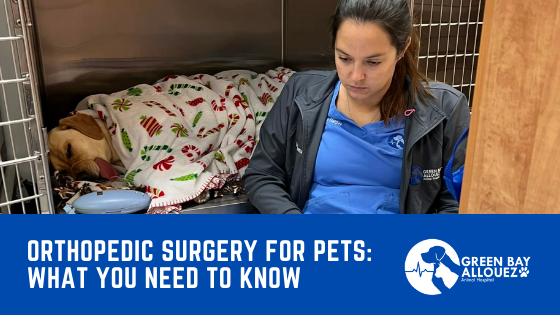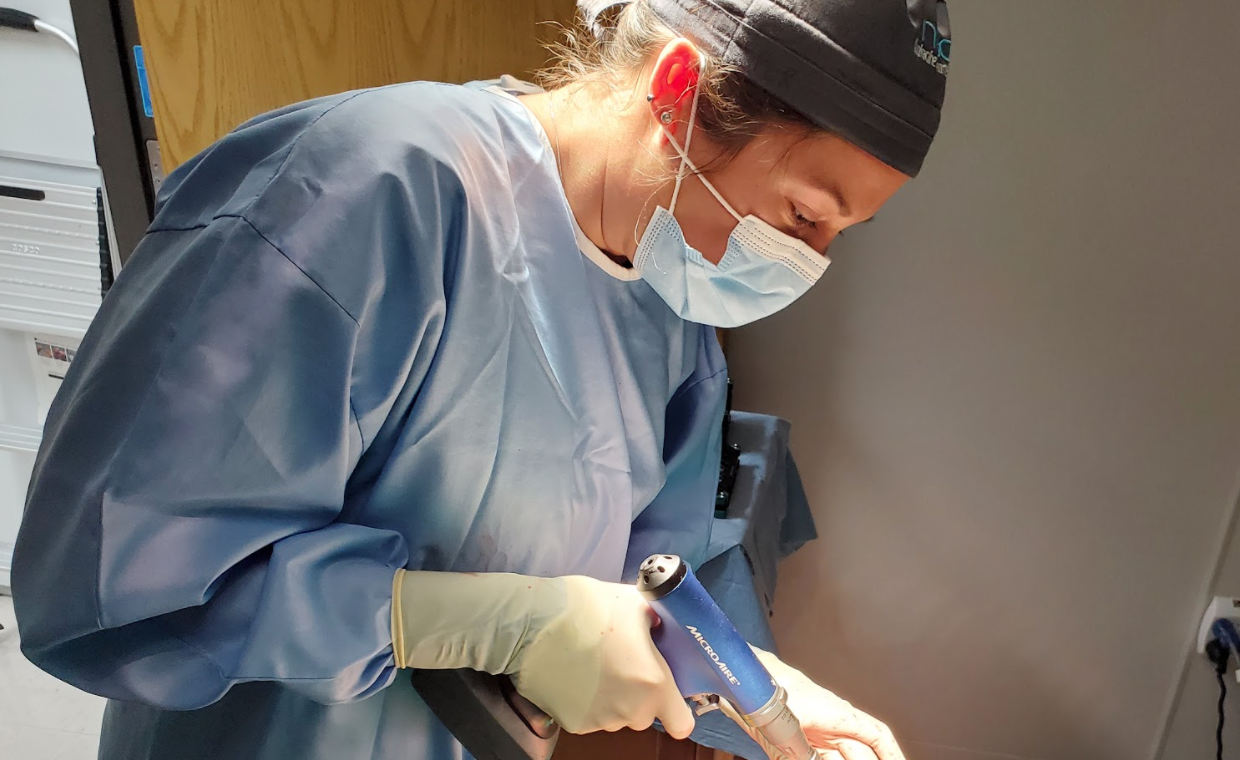Orthopedic surgery is available for your pet, here is what you need to know
Pets can be very stoic when it comes to pain. They hide it well. It’s only when it becomes too much for them, that you’ll know. And depending on the source of your pet’s pain, there could be a possibility of surgery. With surgery, comes questions. Getting answers to those questions can be crucial in giving the green light on surgery. Dr. Jaleesa Harper, who has been with the Green Bay and Allouez Animal Hospital since November 2020 doing orthopedic surgeries, sat down to answer those questions.
What signs will your pet give indicating a need to be evaluated?
- Intermittent not just persistent limping on any limb
- Limp that is not improved with rest and pain meds
- Not wanting to go on longer walks
- Stop playing or playing less
- Avoiding or wanting help to use stairs
- Slower movement than normal
- Trouble sitting or standing for long periods
What happens at the evaluation?
- First, Dr. Harper does a full exam to determine exactly where they are painful
- Second, they are set up as a drop-off for x-rays. Almost all pets need to be sedated. Why sedation? Pets in pain can pose a dangerous risk to themselves and others. It also allows the doctor to do a full orthopedic exam.
After that, a diagnosis and plan can be made.
What happens with your pet during surgery?
- Full monitoring is done, we evaluate heart rate, blood pressure, temperature, breathing, EKG and comfort level during the entire surgery
- To assist in maintaining temperature, your pet is on a heating pad and given pre-warmed IV fluids
- Vitals are monitored during surgery and after
- Measurements are taken every 3-5 minutes with most equipment running continuously
What are some complications that could happen?
- Anesthesia reactions: GI (stomach) upset, diarrhea, excessive sedation, painful
- Infections with the incision often prevented with the use of an e-collar
- Intermittent lameness on the repaired limb
- Plate and/or screw fractures
- Meniscal tears after the fact (If so, your pet was most likely predisposed)
What happens after your pet is out of surgery?
- Temperatures, heart rate and pain are checked often during recovery
- Someone often will sit with them especially if they are anxious
- They recover in a location visible at all times
- Your pet will go home that same day (GBAAH does not offer overnight care)
- They go home on adequate pain control. If appropriate, they are given Nocita which is a 3-day local block of the incision.
- You will get a detailed take-home packet with everything you need to know
- The office will do a one-day and 7-day post-op phone call to check-up. Depending on the surgery performed, you will also schedule a recheck with Dr. Harper within 1-2 weeks after surgery.
What to prepare at home when your pet is at home?
- Moving their bed to the floor and getting them
- Restricting them to certain areas/rooms of the house (i.e. using baby/pet gates)
- Block off extra rooms and stairs. If they have their needs (food, water, outside) on multiple levels in the home, try to move them all to the same level as to avoid stairs when possible.
- If the floors in your home are slippery, place extra rugs down to help them get around easier.
What are some reasons owners elect not to pursue orthopedic surgery for their pet?
- Concern over long term function - not sure it will help
- Rehab may be too complicated
- Cost
One of the main stopping points for pet owners to hesitate on orthopedic surgery for their pets is COST, that it is too expensive. But, what will you need to do for your pet if surgery is not done?
- Continued and long-term pain meds and lab work - - For the average 50-pound dog, long-term medication can be upwards of $1500 per year. The cost of surgery for this same dog is roughly $3000.
The cost of these alone will add up quickly over time. The benefits to your pet FAR outweigh this cost, especially in a younger dog, but even in middle to older age dogs. Orthopedic surgery allows your dog to get back to as close to normal. When there are little or no complications, your pet can have a 90-95% return to full function and that is priceless. Can you put a price on your pet’s pain and their daily function?
Contact us at GBAAH if you have any further questions or feel your pet may need to be evaluated.


